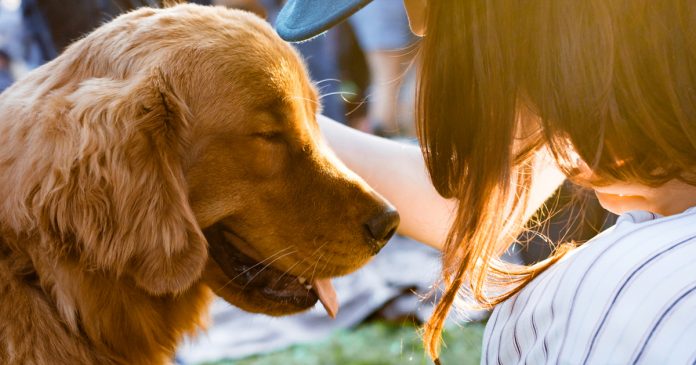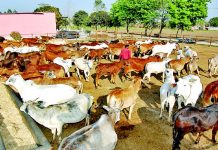This article is written by Vanya Verma from O.P. Jindal Global University. This article talks about the fundamental duties, rights and their impact on animal protection in the country.
Table of Contents
Introduction
Laws are there to protect animals from cruelty, this indicates that animals have a right to be free from cruel treatment. They have a right to liberty because it is against the law to hold them hostage. Article 51A (g) of the Indian Constitution puts on us a fundamental responsibility to protect wildlife and to have compassion for all living creatures. This implies that animals have a corresponding right to be treated with compassion.
The Indian Constitution is the supreme law of the country, outlining the country’s core political code, citizens’ rights and responsibilities, state policy directing principles, methods, structures, and authorities. The Indian Constitution respects the sacredness of animal life and makes it a fundamental duty of citizens to protect and treat animals with dignity.
India’s constitutional framework for animal protection
The following sections make up India’s Constitutional framework for animal protection:
- Fundamental Rights (Part III)
- Directive Principles of State Policy (Part IV)
- Fundamental Duties (Part IV-A)
- Allocation of powers between the Union and the States (7th Schedule)
- The judicial authority of courts (Articles 141 and 144)
Fundamental Rights
Part III of the Indian Constitution (Articles 12 to 35) enshrines the country’s fundamental rights. They establish universal, constitutionally guaranteed rights such as the right to equality, the right to freedom, and the right against exploitation, among others, that are necessary for the existence and development of all people. Any violation of fundamental rights is regarded as serious, and constitutional remedies can be sought directly from the Supreme Court of India under Article 32.
Animal welfare is the fundamental right to life under Article 21
Article 21 establishes the right to life, declaring that no one shall be deprived of his life or personal liberty except following legal procedure.
The Article has characterised the “procedural magna carta for the protection of life and liberty.” The Supreme Court of India has given the right to life a broad interpretation, including the right to food and shelter, as well as the right to education.
In the case of Animal Welfare Board of India v. A. Nagaraja & Ors. (the Jallikattu case), (1949) the Supreme Court used an expansive view of the right to life to include some animal rights under the ambit of the right to life. The facts of the case are as follows:
Jallikattu is a traditional sport in the Indian state of Tamil Nadu in which a bull is thrown into a mob of people who attempt to grab the bull’s back hump and hold on while the animal tries to flee. Over the years, the custom has resulted in multiple human deaths as well as animal welfare problems. The bulls are prodded with sharp rods or scythes, their tails are stretched to severe lengths to fracture the vertebrae, and they are even bitten before being released. There have been tales of bulls being forced to drink wine or having chilli peppers put into their eyes to cause dizziness and agitation. The bulls are stabbed with knives and sticks, pummelling, pounced on and pulled to the ground during the spectacle. If the bulls are not enclosed, they may stampede into oncoming traffic, breaking bones or even dying.
The Animal Welfare Board of India (AWBI) filed a complaint before the Supreme Court of India in 2010 to outlaw Jallikattu, citing concerns about animal cruelty and public safety. The Ministry of Environment and Forests outlawed Jallikattu in 2011, issuing a notification prohibiting the use of bulls as performing animals. The Tamil Nadu Regulation of Jallikattu Act, however, allowed the practice to continue under specific conditions (2007).
The AWBI filed an appeal against a High Court judgement that allowed Jallikattu to be conducted under the Tamil Nadu Act. The AWBI attempted to implement a government order prohibiting bulls from being displayed or used as performing animals.
Judgement of the Supreme Court
The Supreme Court found in favour of the AWBI and upheld the ban on Jallikattu enforcement. It declared Article 51A (g) of the Constitution to be the “magna carta of animal rights” and offered various recommendations to protect animals’ “life” under Article 21.
Every species has a right to life and security, which is subject to the law of the nation, which includes the deprivation of that right for human convenience. While protecting human rights, Article 21 of the Constitution also protects life. The term “life” has been broadened, and any disturbance to the basic environment, which encompasses all kinds of life, including animal life, that are necessary for human life, is covered by Article 21 of the Constitution. In our opinion, “life” in the context of animals means more than simple survival, existence, or instrumental utility for humans, but rather living a life of inherent worth, respect, and dignity.”
Article 21 states that everyone has the right to life and that no one can be deprived of their life or personal liberty unless the law allows it. During the famous Jallikattu (bull taming) case, the Supreme Court declared that animals have rights under this Article.
The Supreme Court also recognised Article 51 A (g) of the Constitution to be the “magna carta of animal rights” in India and incorporated the right to life of animals under Article 21 to value their lives as much as human lives.
Article 51 A of the Constitution, which was amended in 1976, established the Fundamental Duties of Indian citizens. Indian citizens have a responsibility to maintain and improve the natural environment, as well as to exhibit compassion for all living beings, according to Article 51 A (g).
Animal welfare regulations are founded on Article 48 of the Constitution’s Directive Principles of State Policy. According to Article 48, the state must strive to develop animal husbandry using a modern scientific method, while also maintaining, enhancing, and preventing cattle slaughter. Furthermore, the State strives to maintain and defend the country’s ecosystem, forests, wildlife, and environment, according to Article 48A, which was inserted after the 42nd Amendment.
Directive Principles of State Policy
The Directive Principles of State Policy (DPSP) are a set of 15 principles incorporated in Part IV (Article 36-51) of the Constitution that serve as the foundation for state legislation and policies. The DPSP, unlike the Fundamental Rights, are not enforceable in a court of law. States, on the other hand, have the responsibility of putting them into legislation to create a just society. Three directive principles, entrenched in the following Articles, constitute the cornerstone of state policies on animal care in India:
Article 48
The State should make every effort to arrange agriculture and animal husbandry in a modern and scientific manner, with a special focus on maintaining and enhancing breeds of cows and calves, as well as other milch and draught livestock, and outlawing slaughter.
Cattle slaughter, particularly cow slaughter, is a sensitive subject in India since cows are revered by Hindus, Jains, Zoroastrians, and Buddhist groups. Article 48 was debated in the Constitution’s Constituent Assembly as to whether it should be incorporated as a fundamental right. The Constituent Assembly eventually accepted the provision as a DPSP instead of compelling non-Hindus to adopt something against their will, claiming that fundamental rights only apply to human beings and not animals.
Judicial developments in cow slaughter
In the case of cow slaughter, there have been some recent judicial developments. The Supreme Court considered a petition about the legality of Bihar’s cow slaughter ban regulations in Abdul Hakim Qureshi v. State of Bihar (1961). The petitioner claimed that the rules infringed on the basic right of Muslims to freedom of religion (under Article 25) by restricting them from freely practising religious practices such as cow sacrifice on Bakr-Id Day. The Supreme Court of India ruled that none of the Islamic texts, including the Hidaya and the Quran, required cow slaughter and instead allowed for the sacrifice of a goat or camel. As a result, the Court determined that a comprehensive ban on cow slaughter did not violate Muslims’ religious freedom. In the context of Article 48, the Court determined that the directive only applies to cows, calves, and other animals with the ability to provide milk or work as drought animals. As a result, Article 48 does not imply that all cows or cattle must be slaughtered.
In Mohd. Hanif Qureshi v. State of Bihar (1959), the Supreme Court found that “a blanket ban (on cow slaughter) was not permissible if, under economic conditions, maintaining useless bull or bullock would be a burden on society and thus not in the public interest.”
In State of Gujarat v. Mirzapur Moti Kureshi Kassab Jamat (2005), the Supreme Court decided that Article 48 of the Constitution prohibits the slaughter of cows and their offspring. It was stated that cattle who have helped the human species should be treated with care in their old age, even if they are no longer useful. “It was clear from a combined reading of Articles 48 and 51-A(g) of the Constitution that citizens must show compassion to the animal kingdom,” the Court said, adding that “the animals have their fundamental rights, and Article 48 specifically states that the state shall endeavour to prohibit the slaughter of cows and calves, other milch and draught cattle.”
Article 48A
Article 48A establishes the directive principle for environmental conservation and enhancement, as well as the preservation of forests and wildlife. It adds, “The State shall work to maintain and improve the environment, as well as to safeguard the country’s forests and animals.”
The 42nd Amendment of 1976 included this Article, which requires the state to conserve the environment and animals. Article 48A may become enforceable under the purview of the right to life under Article 21 even if it is not judicially enforceable.
The Supreme Court heard public interest litigation in the area of air pollution in Delhi in M.C. Mehta v. Union of India (2002). Regarding Article 48A and public health, the Court made the following observations:
Articles 39, 47, and 48A, individually and jointly, impose an obligation on the state to safeguard and improve people’s health, as well as to protect and improve the environment.
The Supreme Court declared in Sachidanand Pandey & Ors. v. The State of West Bengal & Ors. (1987) that if a case involving environmental preservation is brought before the Court, Article 48A must be considered.
Fundamental Duties
Article 51A (Part IV-A) of the Constitution of India establishes the fundamental duties of the citizens. The 42nd Amendment of 1976 was enacted to bring the Indian Constitution into compliance with Article 29(1) of the Universal Declaration of Human Rights. While Fundamental Duties are not enforceable in courts, they are frequently used to interpret constitutional and other laws.
Article 51A (g) imposes a responsibility on Indian citizens to maintain and improve the natural environment, as well as to exhibit compassion for all living things. Compassion for all living beings includes care for their pain and well-being, according to Animal Welfare Board of India v. A. Nagaraja & Ors. (2014). The Supreme Court viewed 51A (g), combined with the obligation to nurture scientific temperament under Article 51A (h), as the magna carta of Indian animal rights law.
The Supreme Court concluded in State of Gujarat v. Mirzapur Moti Kureshi Kassab Jamat & Ors. (2005) that the Parliament’s objective in enacting Article 51A was for it to be read in conjunction with Articles 48 and 48A, ensuring that the spirit of all provisions is respected.
Freedom granted to animals to ensure their welfare
When it comes to fundamental rights of animals or the five freedoms afforded to them, they were formalised in a 1979 press statement by the UK Farm Animal Welfare Council and are utilised by animal welfare advocates to help win animals the conditions they need to live a healthy and dignified existence.
The Hon’ble Supreme Court highlighted it in its order on the subject of Jallikattu- Animal Welfare Board of India vs A. Nagaraja & Ors. The World Organization of Animal Health (OIE), of which India is a member, operates as the international reference organisation for animal health and welfare, according to the historic judgement. The World Trade Organization (WTO) has designated the OIE as a reference organisation, with a total of 178 member countries as of 2013. According to the OIE, an animal is in a good state of wellbeing if it is healthy, comfortable, well-nourished, safe, able to exhibit intrinsic behaviour, and not suffering from unpleasant states such as pain, fear, or distress (as determined by scientific evidence).
The five freedoms granted are as follows:
- Freedom from hunger, thirst and malnutrition;
- Freedom from fear and distress;
- Freedom from physical and thermal discomfort;
- Freedom from pain, injury and disease; and
- Freedom to express normal patterns of behaviour.
These five freedoms are recognised as animal essential rights around the world and serve as the foundation for future legal actions. These five freedoms are seen as the foundation for all other animal care regulations and rules around the world, similar to how we see our fundamental duties (Article 51 A of the Constitution). It is important to remember that it is also part of our fundamental obligation to safeguard and improve the natural environment, including forests, lakes, rivers, and wildlife, as well as to have compassion for living creatures.
These freedoms, which have been stressed by judicial systems all across the world, are used to determine whether or not animal rights and freedoms have been violated. Each of these five has a deeper significance, which may be interpreted from a variety of perspectives.
Freedom from hunger and thirst
To maintain health and vigour, we must guarantee that animals are free from hunger and thirst by providing easy access to fresh water and food. Our pets and farm animals can easily win the right because they have an owner or caretaker who is responsible for ensuring that they are fed and watered on time. When it comes to wild animals, there are a million projects underway all over the world. Many of these are supported by the government, but others are managed by animal welfare organisations without official assistance.
It’s also worth noting that in India when a section of forest is designated as protected, the area’s employees and authorities take steps to guarantee that the animals inside the forest have access to food and water. Chulannur sanctuary’s man-made water tanks, which can compensate for dry lakes and pools in the summer, are one such measure. Planting endemic trees and plants that are suited to the temperature, soil, and terrain of the site is also a significant step in this direction. When there is a scarcity of food or water, examples of man-animal conflict emerge, leading to unforeseen angles in the incidence.
Freedom from discomfort
The majority of the time, these are animals that are chained or caged and unable to flee. In addition, animals seeking shelter on our private land are frequently scared away. It is impractical and impossible to provide sanctuary for all street animals. However, adopting them rather than purchasing them from pet stores or breeders can provide a loving home for at least a few of them. What we must strive for is a society in which no further rescue is required, a world in which animals are safe and comfortable even when travelling on roadways. This can be accomplished by providing a suitable habitat, which includes shelter and a relaxing resting spot. Animals, particularly stray animals, are subjected to such distress mostly during extreme weather and natural disasters. Numerous animals can be seen on the streets, shivering in the rain and fog or panting in the hot sun. Humans trying to preserve themselves amid natural disasters often forget about their fellow beings, which might result in fatalities. Each flood we hear about or see on the news or the internet is accompanied by images of dead and rotting animals.
Freedom from pain, injury or disease
This is a freedom that allows for a healthy life or a dignified death. Animal euthanasia is permitted only in exceptional circumstances when it is carried out according to a strict protocol and under the guidance and supervision of an expert team. In M/S.Lalitha Spinners vs The Union Of India (2018), the Madras High Court upheld this as well. However, this does not grant anyone the right to kill or slaughter animals indiscriminately if they are vermins or have an incurable disease and are mortally wounded in someone’s opinion.
“When it comes to food, only licenced slaughterhouses are allowed to butcher Ovines, Caprines, Suillines, Bovines, fish, and poultry,” says M. N. Jayachandran, Member, Kerala State Animal Welfare Board. The tragic death of an elephant in Kerala’s Palakkad region calls into question this freedom and raises the question of whether the animal deserved a more rapid and painless death. All creatures are in the same boat. We see them walking around in pain with wounds, and it is the citizen’s responsibility to report them to the appropriate authorities so that they can have a healthy life.
Freedom to express normal behaviour
We frequently hear concerns about residents associations and neighbours refusing to allow people to live with their pets, such as dogs since the animals exhibit typical behaviour. Dogs are the most common example of this, as they cause a nuisance to the neighbours. However, the law emphasises the necessity of animals expressing their natural behaviour to provide them with a good existence. Also, sociable animals and birds that are imprisoned, caged or chained are more likely to suffer from sadness, trauma, and other mental health issues. This is a problem that must be addressed as well. This will be ensured by providing adequate space, adequate facilities, and the company of other animals of the same species.
Freedom from fear and distress
Animals who are beaten suffer not just physical injuries but also mental illness as a result of their treatment. In various grades, barbaric tactics such as unscientific training and taming, screaming, and even expecting them to behave like human beings are examples of this. The fundamental right to remain mentally engaged is also enforced through this freedom. This can be accomplished by ensuring that mental pain is avoided through conditions and therapy.
These five freedoms, as stated, explain the five dimensions of animal welfare under human control. These liberties ensure not only animal welfare but also a decrease in the number of occurrences of man-animal conflict and animal attacks. When animals’ rights are infringed, they are forced to behave and act in ways that harm humans in one way or another. As a result, these legislative regulations might be viewed as a step toward human welfare and safety. It can also be seen as an effort to promote the idea of living in harmony with nature.
Conclusion
These precise Constitutional provisions and significant Supreme Court decisions serve as the foundation for wildlife protection and conservation. They also enable citizens and civil society institutions to positively participate in the process of forest and wildlife protection.
Animal rights are effectively defended by our statutory provisions and judicial declarations. No right, however, can be absolute. Animal rights, like human rights, must be regulated. We must strike a balance between protecting animal interests while also ensuring the safety and well-being of humans. Abuse of animals must come to an end. Humans must abandon their patronising attitude toward other creatures. Human supremacy in terms of intellect cannot be allowed to trump the living rights of other animals. All life forms must coexist to prevent our ecosystem from becoming unbalanced.
References
- https://www.conservationindia.org/resources/the-constitutional-imperatives-in-protection-of-wildlife
- https://timesofindia.indiatimes.com/blogs/legally-speaking/do-animals-have-rights/
LawSikho has created a telegram group for exchanging legal knowledge, referrals, and various opportunities. You can click on this link and join:
 Serato DJ Crack 2025Serato DJ PRO Crack
Serato DJ Crack 2025Serato DJ PRO Crack











 Allow notifications
Allow notifications



